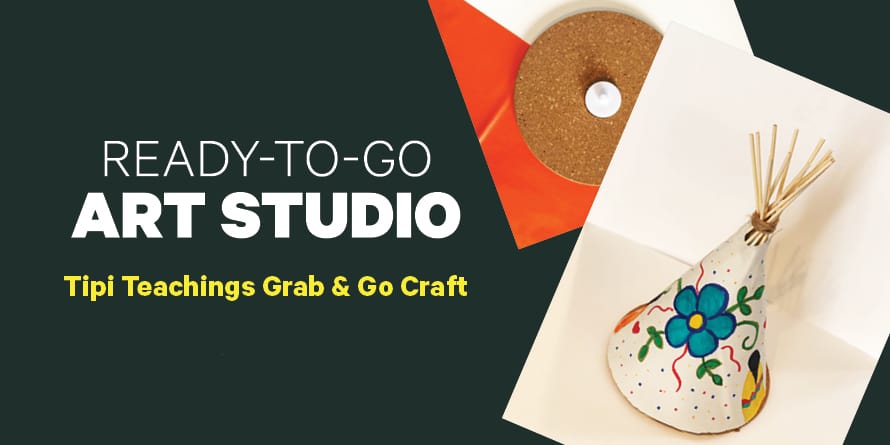 Note: This March Break 2022 program has ended, but you can still follow our attached guide and use supplies at home to create this special craft!
Note: This March Break 2022 program has ended, but you can still follow our attached guide and use supplies at home to create this special craft!
What is the Ready-to-Go Art Studio program?
We provide the steps, inspiration, and supplies. You create the magic.
The Ready-To-Go Art Studio is a take-home art kit program for adults, teens, and families, intended to empower, celebrate, and inspire art. In turn, art empowers, celebrates, and inspires you, the creator.
Our Library staff members have worked together to dream up this Grab & Go initiative and generate accompanying materials for each session. Check our events or contact your local branch for kit availability.
How it works
- Interested participants register for a take-home kit by registering via our What's On events calendar, or calling or visiting their local participating branch.
- Registered participants will be able to pick up their art kit at the Library. When you sign up, you may receive your kit right away if you're visiting in person; or you'll receive more information about when to pick up your kit.
- The art kit includes: supplies for creating the art piece; a step-by-step instruction sheet; and an educational introduction to the kit's theme.
- At your leisure, enjoy your Ready-to-Go Art Studio kit and create your masterpiece. You can complete your artwork on your own, or with family or friends! Note: Although you can create your artwork at any time, if you share it with us within the time frame noted below, you'll be entered to win a prize and your artwork will be featured in our gallery!
- Share your final artwork with your Library community following the steps below.
- Note: If registration is full or you are not local to our participating branches, we still encourage you to participate using your own supplies! Instructions are available below and can be easily adapted.

March 2022: Tipi Teachings
Created in partnership with Cheryl Copage-Gehue, Indigenous Advisor, Halifax Regional Municipality
Mi’kmaq History Month, opens a new window is celebrated each year in October. It is important to learn about the Mi’kmaw people, their culture, and history, not only in October, but all year long. Halifax Public Libraries, in partnership with the Halifax Regional Municipality, Diversity & Inclusion Office is pleased to offer this art activity that highlights and celebrates the rich diversity, culture, and heritage of Indigenous people across Nova Scotia. Read more about this art kit and what it represents, below.
I couldn't register for this session. How can I take part?
- Whether you live in a different location, registration filled up, or March 2022 passes you by, you can still take part!
- Use your own supplies—get creative! Don't have paint? Use crayons! No canvas? Paper works too!
- View or download the instruction sheet (PDF) and/or watch the instructional video.
- Share your artwork with your Library community. See how, below.
Share your art
Share your creation to connect with community, celebrate your talents, and honour this month's theme!
- Take a photo! You can pose with your creation(s) alone or as a group, or simply photograph it on its own.
- We'll share contributions in a gallery on this page.
- Email your photo to hplevents@halifax.ca or post it to Instagram, Twitter, or Facebook, and tag us @hfxpublib with hashtag #ReadytoGoArtStudio.
- Share by March 25 to be entered to win an art prize pack from Michaels craft store. The draw will take place on March 31.
CONSENT: By submitting your photo, you give Halifax Public Libraries and its partners non-exclusive permission to use content of and/or made by the participant for digital or print publications. You understand that this may include, but is not limited to, social media posts, websites, newsletters, advertisements, posters and pamphlets. You also understand that on occasion, Library photos, video, audio, or publications may be shared with media outlets and community partners for use in promotions of Library events, initiatives, and stories. You certify that no other person's permission is needed to authorize the use of said images or content. You agree that Halifax Public Libraries cannot be held liable for images or content used with my consent.
CONTEST DETAILS:
- Winner will be selected by random draw from submissions.
- After March 31, 2022 we will contact the winner via email.
- Halifax Public Libraries' Contest Ineligibility Policy applies.
- You must be a resident of Halifax Regional Municipality to win this contest.
About the theme: Tipi Teachings
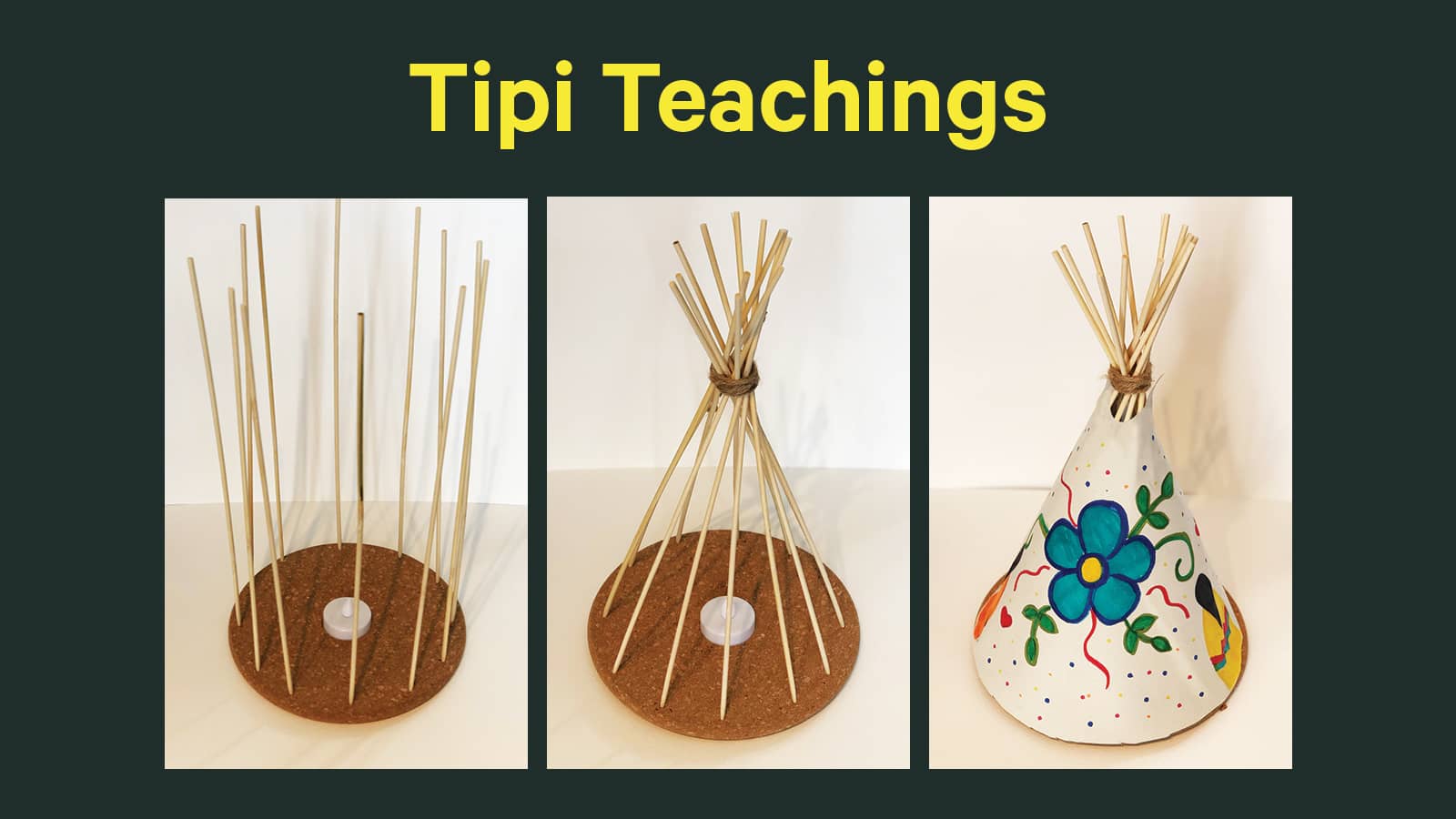 Information sourced and shared by Cheryl Copage-Gehue, Indigenous Community Engagement Advisor, Office of Diversity & Inclusion, Halifax Regional Municipality
Information sourced and shared by Cheryl Copage-Gehue, Indigenous Community Engagement Advisor, Office of Diversity & Inclusion, Halifax Regional Municipality
Mi’kma’ki is made up of all of Nova Scotia, Prince Edward Island, large areas of New Brunswick, the Gaspé Peninsula, and Newfoundland. In our language, Halifax is called Kjipuktuk, meaning the great harbour. Mi’kma’ki was divided into seven districts, each of which was led by a District Chief. This group of seven district chiefs made up the Mi’kmaw Grand Council, which governed over the Mi’kmaw people. There were many smaller communities in each district. These communities were led by a local chief. The Halifax Regional Municipality is located in the Sipekne’katik District.
In the past, Mi’kmaw people learned about their culture and history through stories and legends. It was rare for Mi’kmaw people to write their histories down on paper. We listen to each other, especially to the Elders in our community, because it is our stories and legends that help us put all the pieces of the puzzle together into a picture that we can call our own.
A group of Mi’kmaq could set up camp in a matter of hours, building a fire and making wigwams. Everyone was organized to help gather the building materials and supplies. Our word "wigwam" comes from the Mi'kmaq "wikuom", a dwelling. Wigwams were usually built by women and could be built in a day. The basic structure of the wigwam was five spruce poles, lashed together at the top with split spruce root and spread out at the bottom. A hoop of moosewood was tied under the poles just down from the top to brace them. Shorter poles tied to the hoop all around provided supports for the birchbark cover. Birchbark sheets were laid over the poles like shingles, starting from the bottom and overlapping as they worked up the wigwam. Extra poles laid over the outside helped hold the birchbark down. The top was left open for fireplace smoke to escape.
A separate bark collar covered the top in bad weather. The floor was lined with fir twigs, woven mats and animal furs and a large hide acted as a door cover. Wigwams were painted with figures of animals and birds. The largest conical wigwams housed 12-15 people; for bigger families, a longer style with two fireplaces was built.
The word tipi was not used by the Mi'kmaq as it comes from a different native language and usually refers to a tent covered with skins, not bark.
Today, when you attend public events like National Day of Truth & Reconciliation or Treaty Day, you will see that tipi structure is being used instead of our traditional bark covered wigwams. We have adopted the tipi structures as a tool to showcase Indigenous culture.
For this activity we will be building upon the teachings that are taught to our people as they learn to build a tipi structure.
Hope you enjoy this activity and the lessons that are learned as we build our structure. Keep your eye for these structures around the city in the upcoming months especially around National Indigenous People Day (June 21) National Day of Truth and Reconciliation (September 30) and Treaty Day (October 1) and the launch of Mi’kmaw History Month in October.
Gallery: Community art
Learn how to share your Tipi Teachings artwork here.

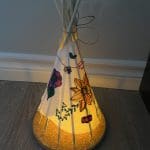

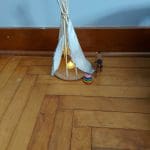
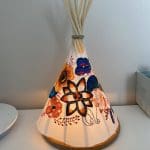
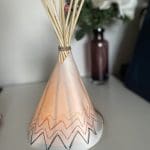
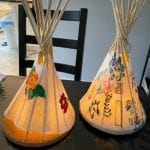
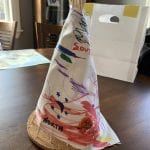
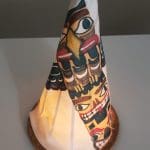
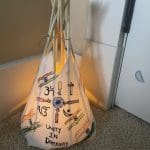
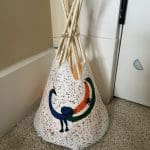
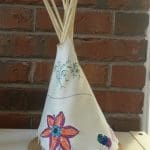

Add a comment to: Ready-to-Go Art Studio: Tipi Teachings